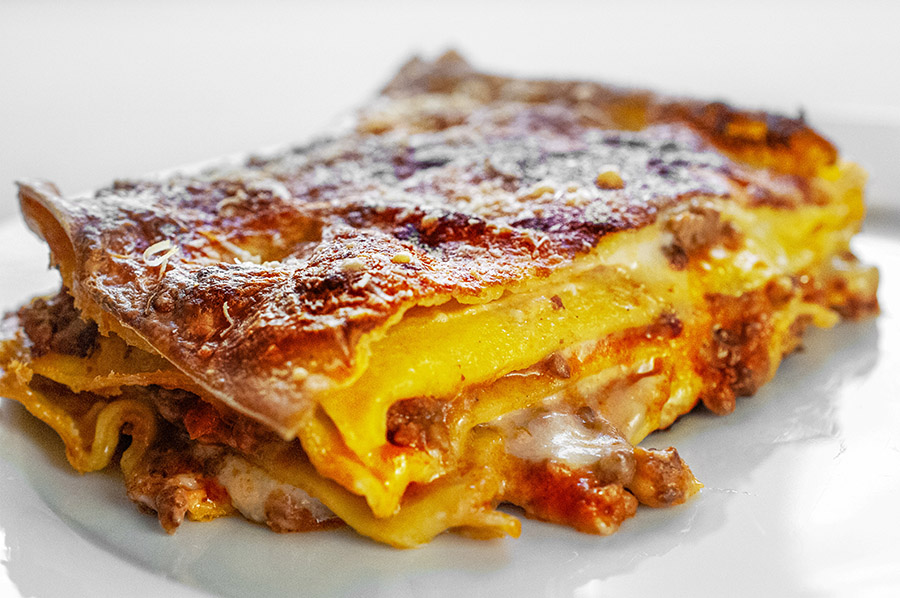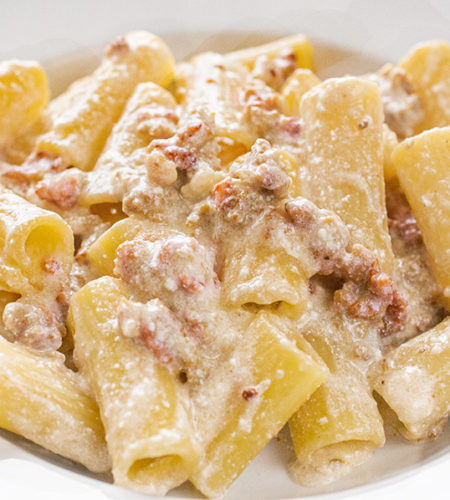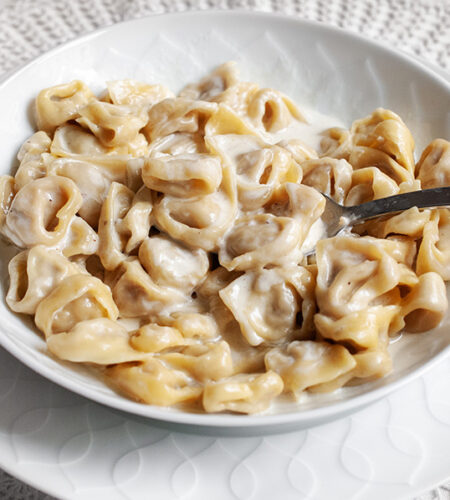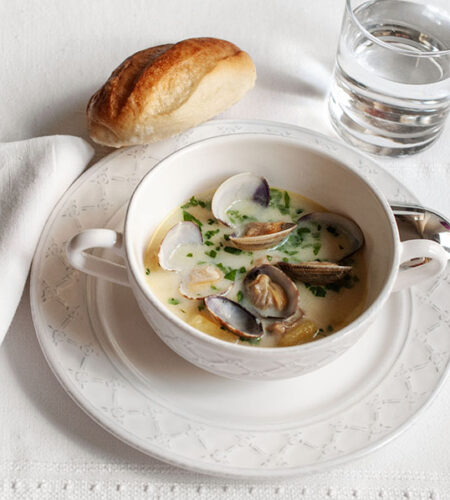One of the first books that reports a Lasagna recipe is the Chronicle of Frà Salimbene de Adam da Parma of 1284, in which sheets of pasta were cooked and served with grated cheese.
In the late sixteenth century, Bartolomeo Scappi was the first to write about a layered cake of dough baked in the oven, enclosed in a short-crust pastry container.
Then the preparation of pasta gradually simplified – recipes similar to those of today can only be found at the end of the 1700s.
Over the centuries, the various regional cuisines have edited this recipe in various ways and so we have the Lasagne Bolognesi, the Vincisgrassi, and the Neapolitan Lasagne that have gradually been refined up to the present day.
Nanny Zeudi made the best lasagna I’ve eaten so far. Unfortunately, she did not leave me a recipe, but only the memory of how she prepared it. I was already a young girl eager to learn new recipes and often cooked with her.
This lasagna has two fundamental characteristics that differentiate it from the Bologna one: milk should not be put in the sauce, but above all, there must be diced mozzarella between the layers. We in the family like streamlined things!
My Family’s Lasagna
- Preparation time: 240 minutes
- Ingredients for 4-6 servings
- Difficulty: Difficult recipe
- Ingredients
- For the fresh pasta:
- 3 eggs
- 2 cups (300 grams) of all-purpose flour
- For the ragù:
- 1 stick of celery
- 1 small carrot
- 1 large white onion
- 7 oz (200 grams) of minced beef
- 7 oz (200 grams) of minced pork
- 1 sausage
- 2 tablespoons of tomato paste
- ½ glass of red wine
- Extra virgin olive oil to taste
- Salt and pepper to taste
- For the béchamel sauce:
- 1 2/3 cup (400 ml) of milk
- 2 tablespoons (30 grams) of butter
- 2 tablespoons (30 grams) of flour
- Salt and Pepper to taste.
- Nutmeg to taste
- For the dressing:
- 1 Fiordilatte cheese (cow milk mozzarella)
- ½ cup (100 grams) of grated Parmesan cheese
- Butter to taste
- Instructions
- Start preparing the ragù in advance.
- Finely chop the celery, carrot, and onion. Sauté them in a large pan with oil for about ten minutes, adding water slowly if necessary.
- Separately, in a pan with oil, cook the minced meat and the crumbled sausage. Deglaze with the wine and let it evaporate.
- Combine the two compounds in the sauté pan and add the tomato paste and a ladle of water.
- Stir for at least two hours over a very low heat.
- Meanwhile, prepare the béchamel. In a saucepan, melt the butter. Add the flour, stirring quickly with a whisk, and then the milk. Bring to a simmer. For more details on how to do, see here.
- Prepare the pasta. On a large wooden board, pour the flour out and shape the flour into a volcano with a large hole in the center. Then crack the eggs, lightly beat them, and add them in the middle in the center. Using a fork, mix the eggs in the flour to ensure the walls of the volcano don’t break too soon.
- Combine the mixture with a spatula until you obtain a dough. Knead by hand until the dough is very smooth, around ten minutes. Wrap with cellophane and let it rest at room temperature for an hour.
- Roll out the dough with the sheeter up to a thickness of 0.5mm. Cut it into squares of 8 inches by 5 inches.
- Boil the water for the pasta in a saucepan. Salt the cooking water to the boil. Cook the rectangles of fresh pasta for about two minutes; drain them with a slotted spoon and let them cool in a container with cold water and ice cubes. Then put them to dry on a cloth.
- In a well-buttered bowl, put a spoonful of meat sauce at the bottom and then a layer of pasta. Season with a little ragù, béchamel sauce, and 1 tablespoon of grated Parmesan cheese. Make another layer with the pasta, the meat sauce, and the diced Fiordilatte cheese.
- Continue making alternating layers with béchamel and others with Fiordilatte until all the ingredients are used up. This should be about five to a maximum of seven layers. The last layer must be with only the béchamel, parmesan, and a few flakes of butter.
- Bake in a hot oven at 400 ° F for about forty minutes. Place the grill on both the top and bottom for the final minutes to form a crispy crust. Remove from the oven and let the lasagna rest for a few minutes before serving.
Tips to ensure the success of the dish:
- The passage of the meat in the pan is important. The Maillard reaction must be started and this only occurs at temperatures above 140 °. If done together with the sauté, the latter burns.
- Boil the rectangles of pasta a few at a time to prevent them from sticking to each other.
- For the making of the filling to go even faster, I put 2/3 of the béchamel in the sauce and then make the layers. The remaining béchamel is used for the base and for the final layer.




